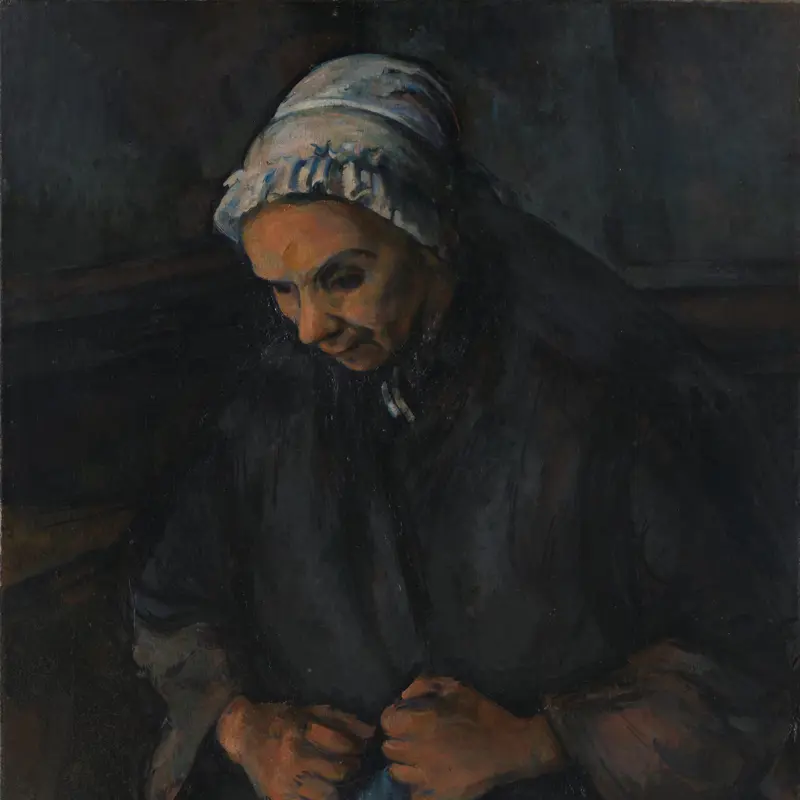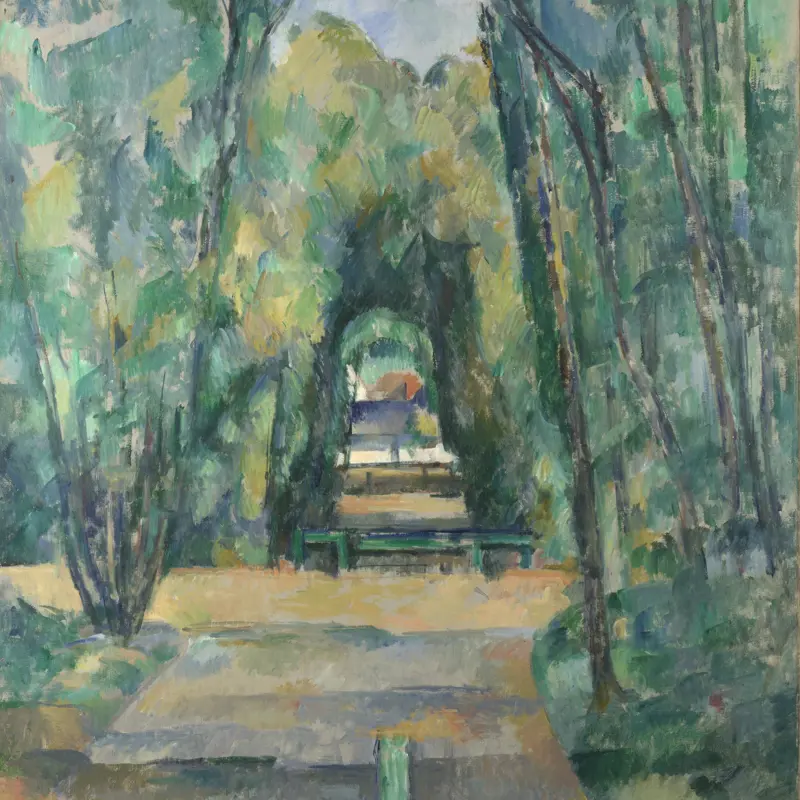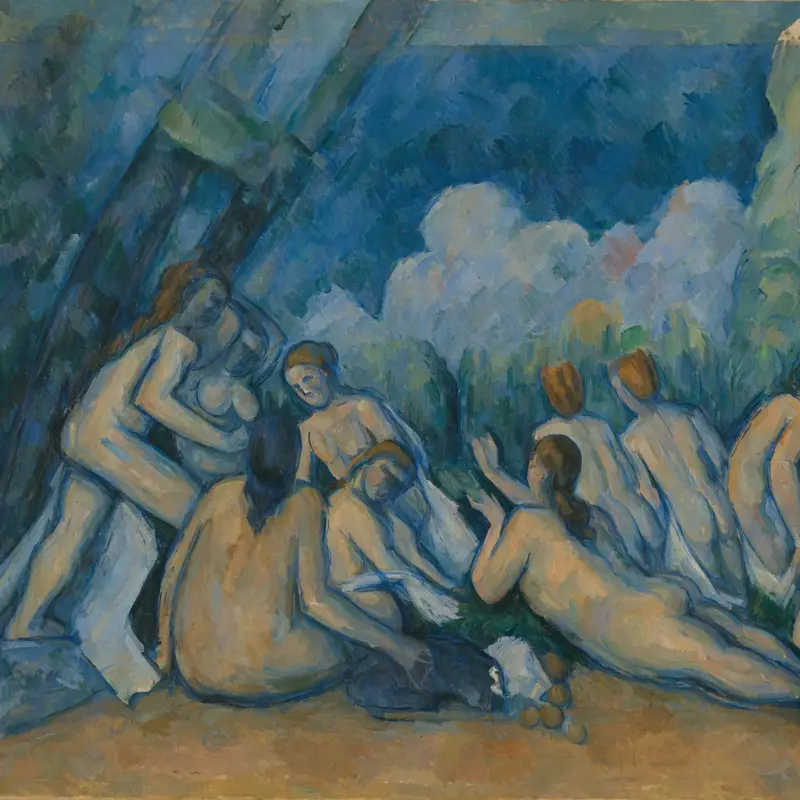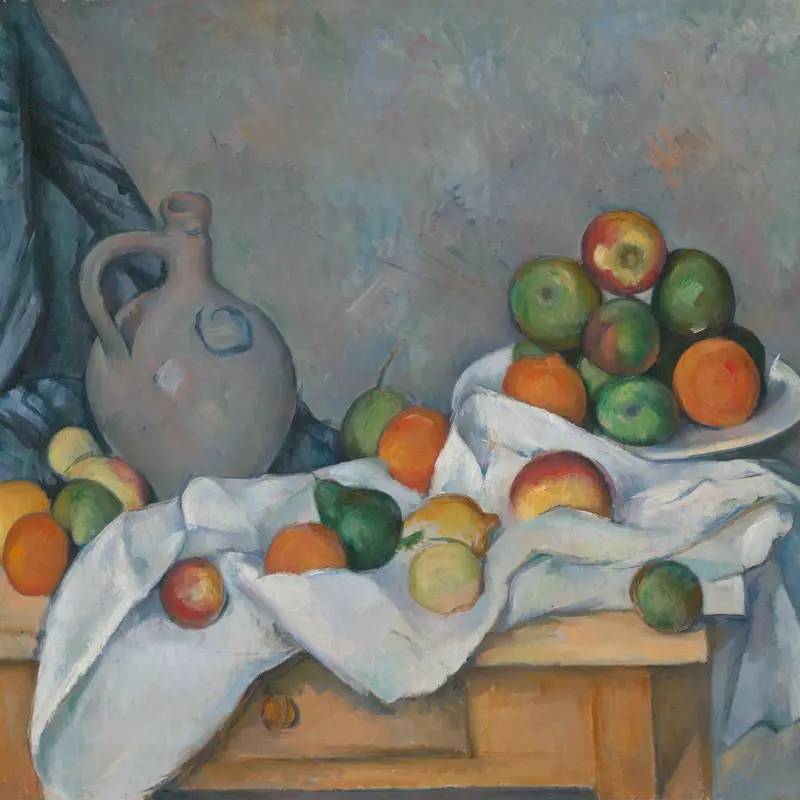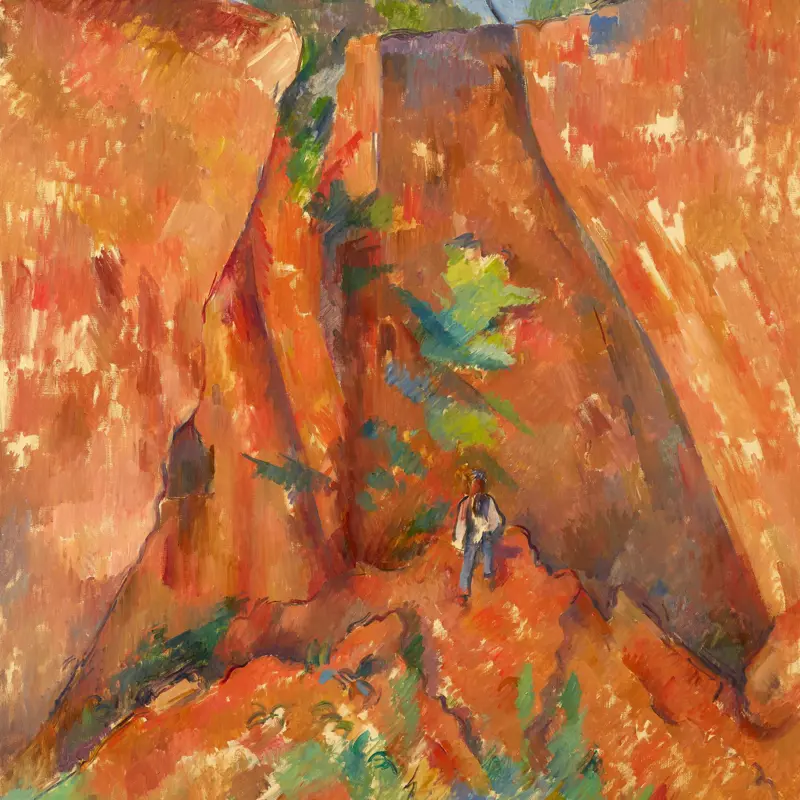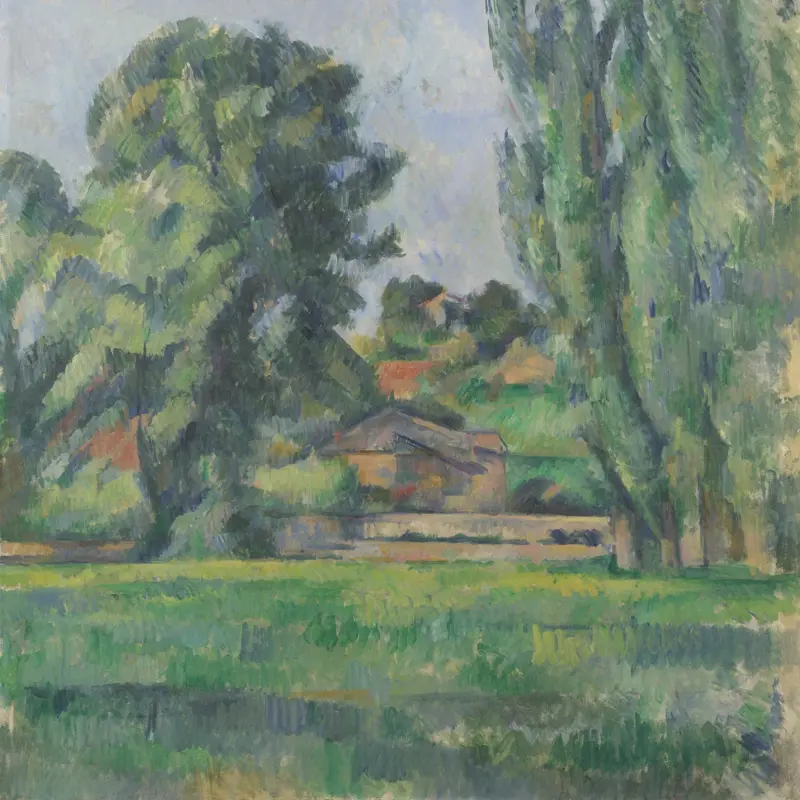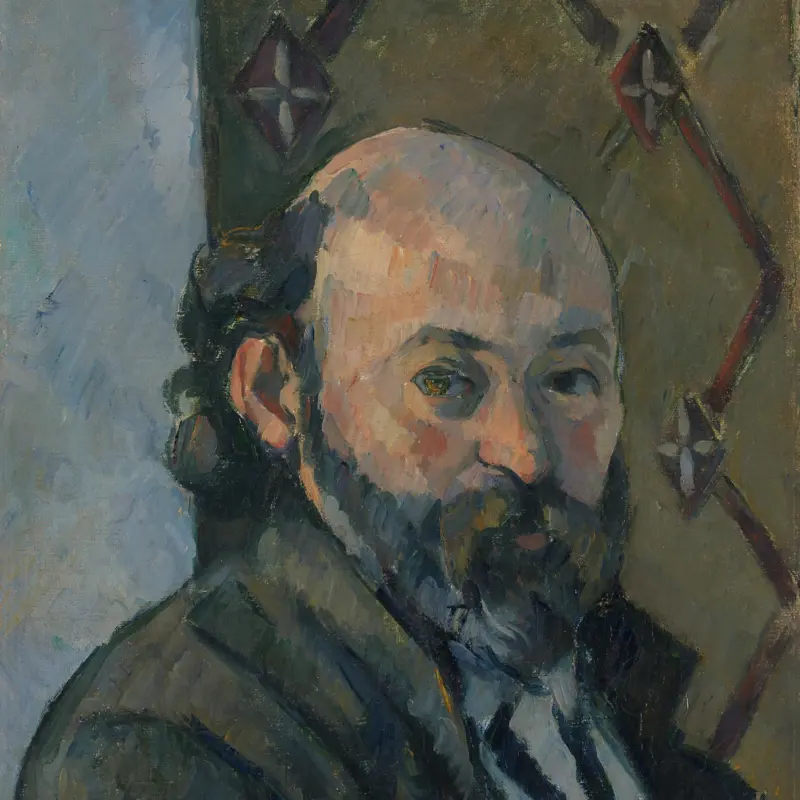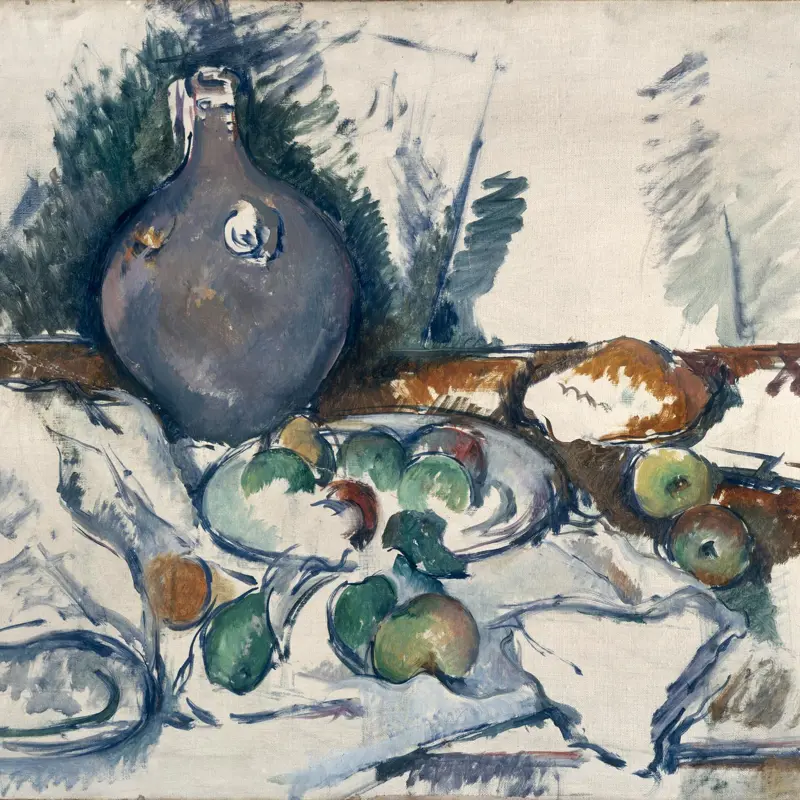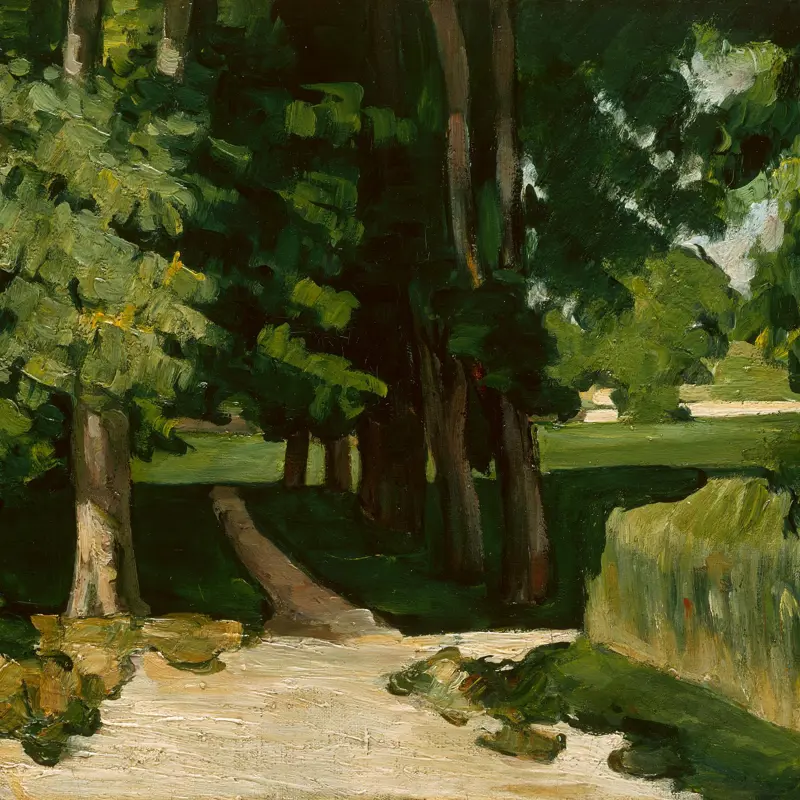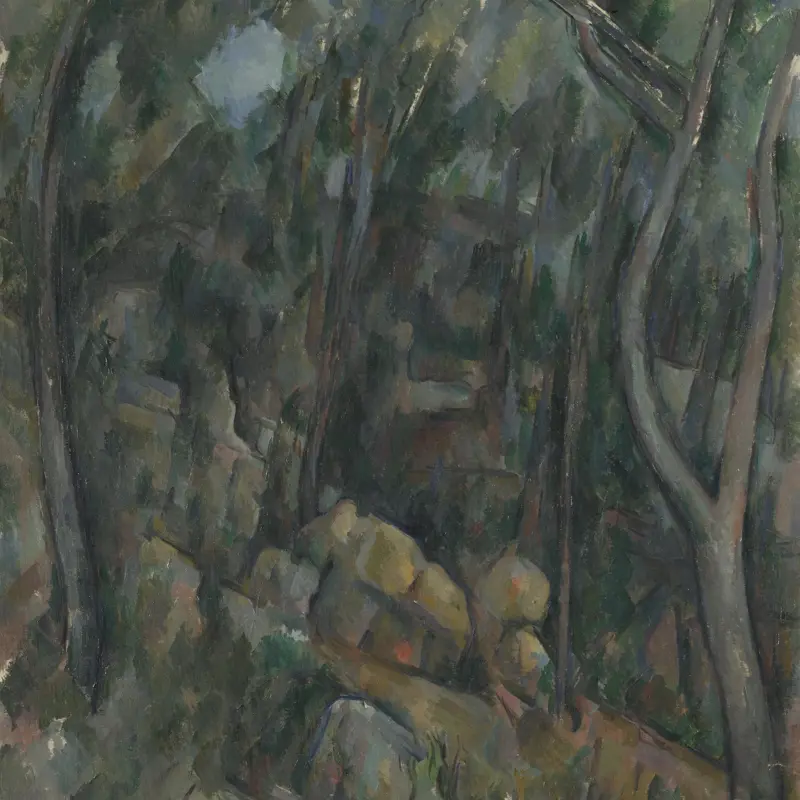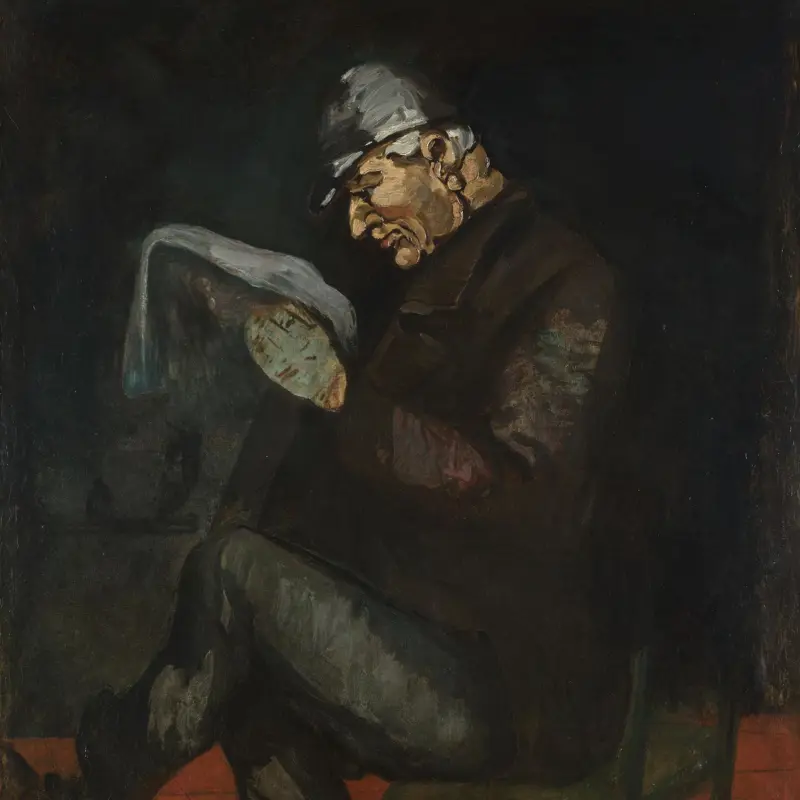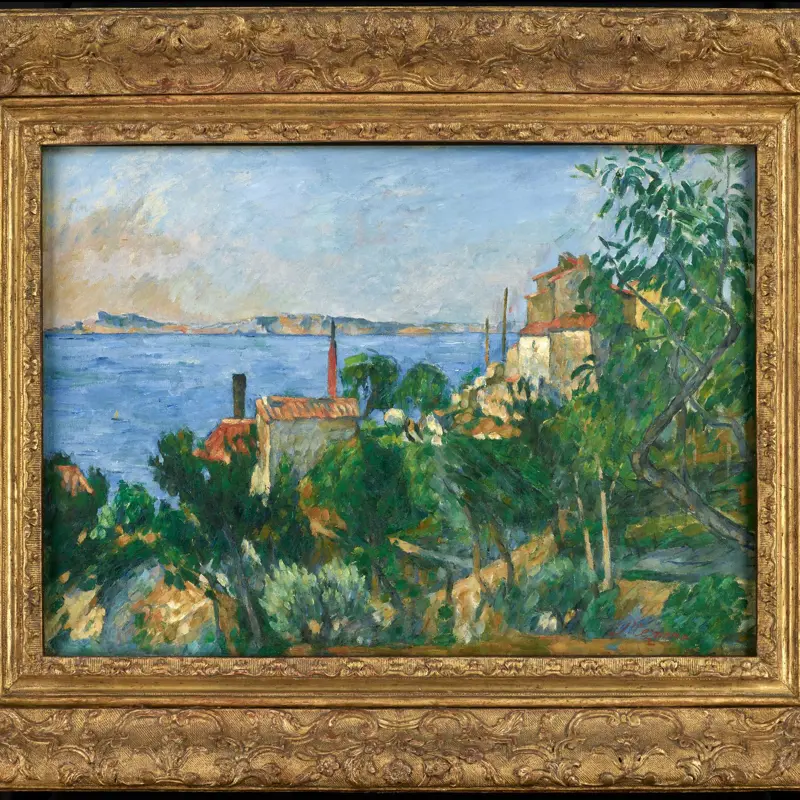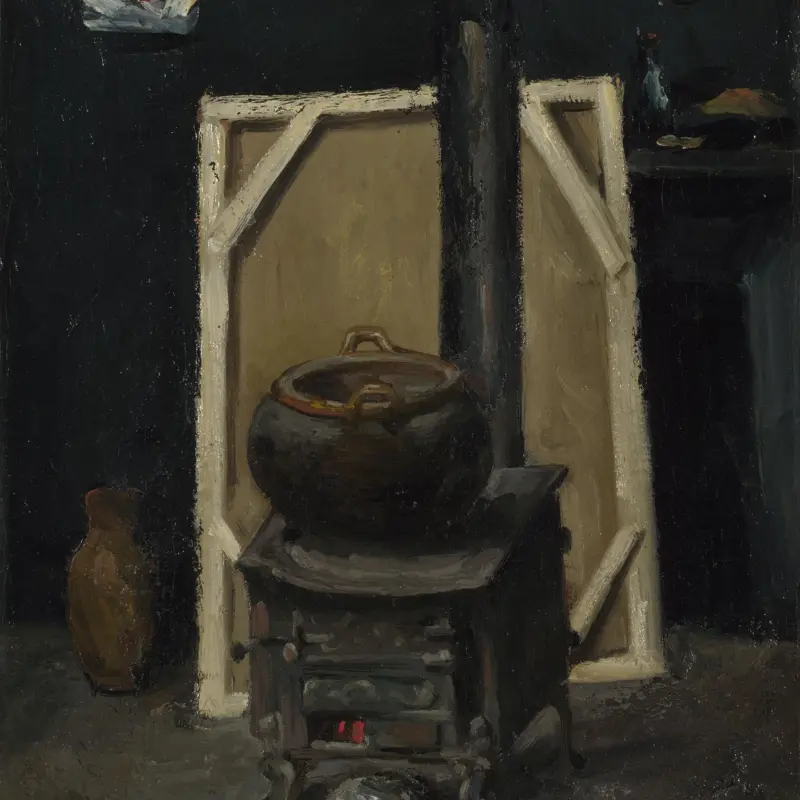Cezanne associated with the Impressionists, but always had other aims. He said that his ambition was to 'make of Impressionism something solid and durable like the art of museums'. Cezanne's work was discovered by the Paris avant-garde during the 1890s. It had a significant influence on Picasso and the development of 20th-century art.
Cezanne's boyhood in Provence was dominated by his father, a wealthy banker, and his friend Emile Zola. Under family pressure he trained as a lawyer in his native Aix while attending lessons at the local drawing academy. After moving to Paris he attended a private art school (the Académie Suisse).
Cezanne absorbed many influences, including those of Courbet and Manet, in his early years. In his early works he often imitated Courbet, applying thick layers of paint with a palette knife. He later told Renoir that it took him twenty years to realise that painting was not sculpture. In the 1880s his brushwork became increasingly systematic and ordered. He worked slowly and methodically, selecting subjects he could study for long periods.
Paul Cezanne
1839 - 1906
Works by Paul Cezanne
(Showing 6 of 14 works)
A old women, her gaze unfocused, clutches a rosary – a string of beads used in prayer – tightly in her hands. According to the writer Joachim Gasquet, the sitter was a former nun who had escaped from a convent, wandering aimlessly until Cezanne took her on as a servant.Gasquet found this painting...
Cezanne spent several months over the summer of 1888 working in and around Chantilly, some 24 miles north of Paris. This is one of three similar oil paintings of the park surrounding the chateau that he produced during his stay. The symmetry and spatial depth of this view may have appealed to him...
Around 200 of Cezanne’s works depict male and female nude bathers, either singly or in groups, in a landscape. This large painting is one of three pictures of female bathers that Cezanne worked on during the final decade of his life. They represent the culmination of his lifelong investigation of...
In the early 1890s, Cezanne repeatedly painted the same set of objects in the isolation of his studio – fruit, dishes, cloths, and a water jug – to render them from different perspectives and interrogate their formal properties. In this picture, Cezanne introduces subtle effects of distortion to...
The wall of angular, jutting rock formations in this painting may represent a quarry, with the cuttings revealing geological strata. While the hillside is somewhere in Cezanne’s native Provence, the specific location has not been conclusively identified.Stylistically, the painting relates to scen...
In the 1890s and early 1900s, Cezanne painted numerous views of the Bibémus Quarry. Situated not far from Aix-en-Provence, the site was renowned since Antiquity for its yellow-ochre limestone. But while the artist was mesmerised by the quarry’s chromatic qualities, he also had personal and intell...
This painting is of a summer landscape in Cezanne’s native Provence in the south of France. Like the Impressionists, Cezanne was interested in depicting the landscape primarily using touches of colour. Although this painting shows Cezanne’s debt to Impressionism, his method is more controlled. Fo...
Paul Cezanne was about 40 years old when he painted this self portrait in Paris around 1880–1. He was now middle-aged with a family to support, and the intensity of his earlier self portraits has here given way to a more distant and reflective presence. Although relatively small, the portrait has...
The Château Noir was a rambling house situated in extensive grounds near Aix-en-Provence in the south of France. Surrounded by wild vegetation, the run-down, isolated chateau offered Cezanne many subjects, and it became one of his favourite locations. He rented a small room in the house from 1897...
An older man sits, legs crossed and head bowed, absorbed in his reading. This is Cezanne’s father, Louis-Auguste. He was probably in his early sixties when his son painted this portrait directly onto an alcove wall in the salon of Jas de Bouffan, the country residence outside Aix-en-Provence that...
Not on display
During the 1860s Cezanne divided his time between his family home in Aix-en-Provence and Paris, where this picture was probably painted. It evokes the privation of his Bohemian existence in the capital. Cezanne has rearranged the objects in his studio, and we see them from a high viewpoint, as th...
You've viewed 6 of 14 works

